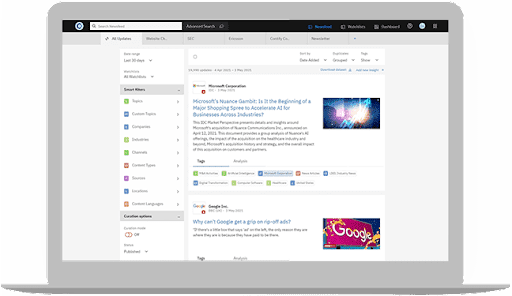The rapid adoption of technology during the pandemic not only sustained businesses through the calamity but also has made organizations much more competitive than before. Even now, it continues to redefine how we work, live and interact.
Meanwhile, competition continues to heat up; 48% of businesses say that their industry has become much more competitive in the last three years. CI teams and budgets are growing as the need for — and impact of — competitive intelligence expands. What’s more, 57% of businesses have CI teams of two or more dedicated competitive intelligence professionals, compared to just 37% of companies two years back.
Once again, it is a technology that is increasingly being used to optimize value for competitive intelligence teams. Technology can help reduce time spent on intelligence gathering and shift it to generating actionable insights. Consequently, while manual, ad-hoc CI processes still exist, companies are quickly embracing competitive intelligence software to drive their CI processes.
Website tracking is one of the critical activities for CI teams, irrespective of the level of maturity of the CI function. Why? Because, your competitors’ websites are a treasure trove of actionable intelligence such as messaging/positioning changes, administrative changes, pricing changes, and product feature updates. Even changes in the privacy policies and terms & conditions can provide valuable insights into your competitors.
Contify’s Benchmark Report for B2B Marketers reveals that competitors’ websites are among the top sources of competitive intelligence.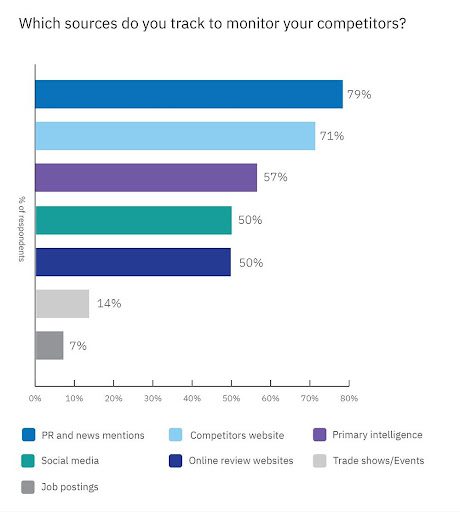
This article will discuss the benefits of tracking competitors’ website changes, identify which changes you should focus on, and the best way to track your competitors’ website changes. Let’s begin.
Benefits of tracking your competitors’ website changes (with examples)
Why should you be tracking your competitor’s website changes? The most obvious answer is gaining insights into what your competitors are doing or planning to do next. Other benefits are as follows: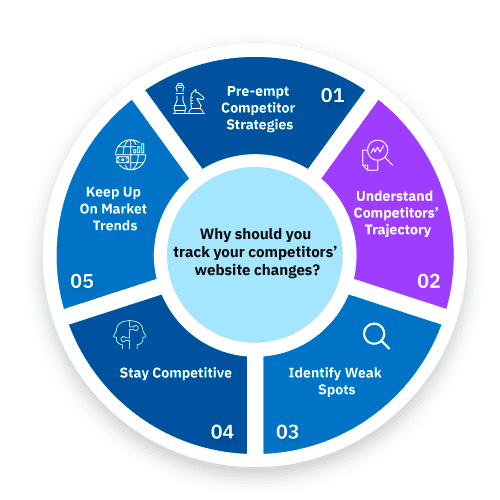
1. Pre-empt Competitors’ Marketing Strategy
Tracking your competitors’ websites can help identify changes in messaging, positioning, value propositions, and selling points, allowing you to pre-empt their strategies. These changes in the messaging/positioning on your competitor’s website suggest a shift in their marketing/branding strategy. It’s a good place to start planning your counter-strategy. As an example, let’s say a competitor changes its positioning from “UK’s Favourite Luxury Soap” to “Europe’s Favourite Luxury Soap.” That is a signal that they’re looking to expand geographically. When analyzing positioning and messaging changes, focus on how they’ve changed. Is the tone now formal? Casual? Or perhaps bold? Has their primary target audience changed? Have their CTAs changed? For example, has “View a Demo” changed to “Get Started” to attract customers’ curiosity? Look for these changes on the Homepage, and the About Us section. The image below will explain better.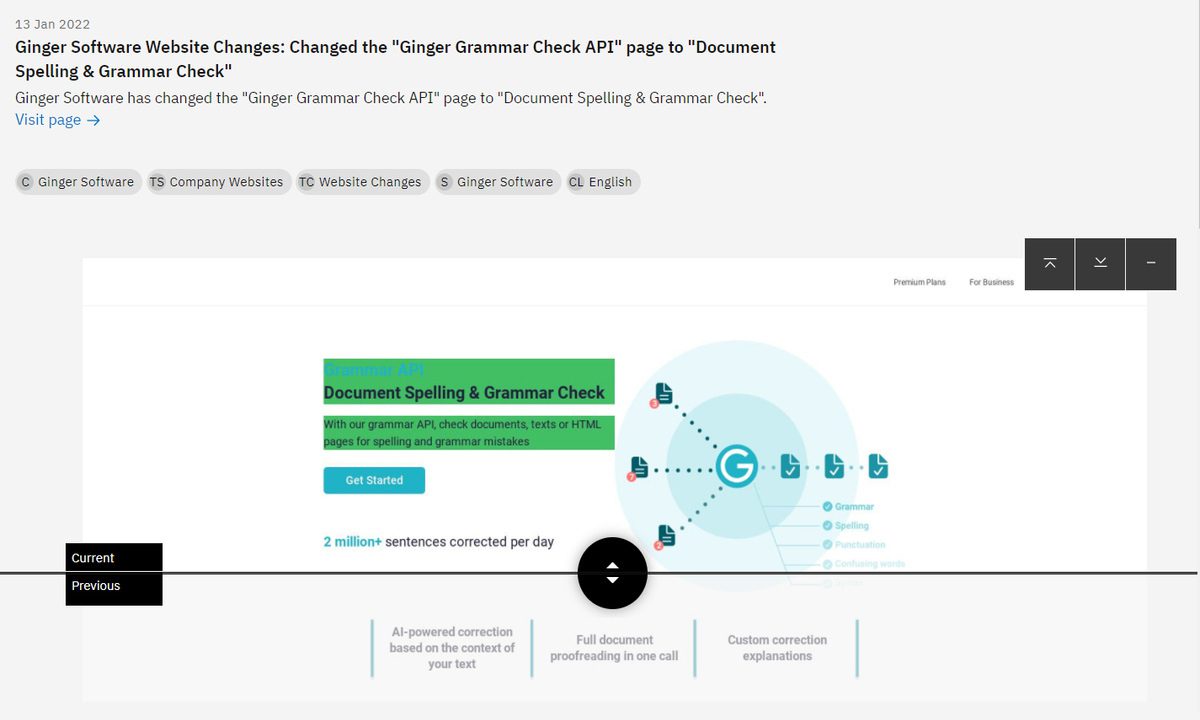
2. Understand Competitors’ Hiring Trajectory
The Careers or Jobs page is an essential page for your competitors’ websites. Why? Because it can help identify if and when the company is growing its team, has granted an employee a promotion, terminated an employee, or expanded into new verticals or product lines. These changes provide insight into the particular function or department the company is focusing on and it’s budget for it. Thus, it is important to investigate new additions to competitors’ organizations, particularly leadership changes.
3. Identify Vulnerabilities
Sometimes you might notice that a piece of content mysteriously appeared and disappeared from your competitors’ websites in a matter of days. It could be an offer, or maybe some other marketing collateral. What does it mean? The answer is that you probably have identified something they weren’t confident enough with – a weak spot – and can exploit it. It could also be that your competitors have added or removed a particular service, likely because it didn’t work out for them, or because their customers didn’t like it. (See example below.)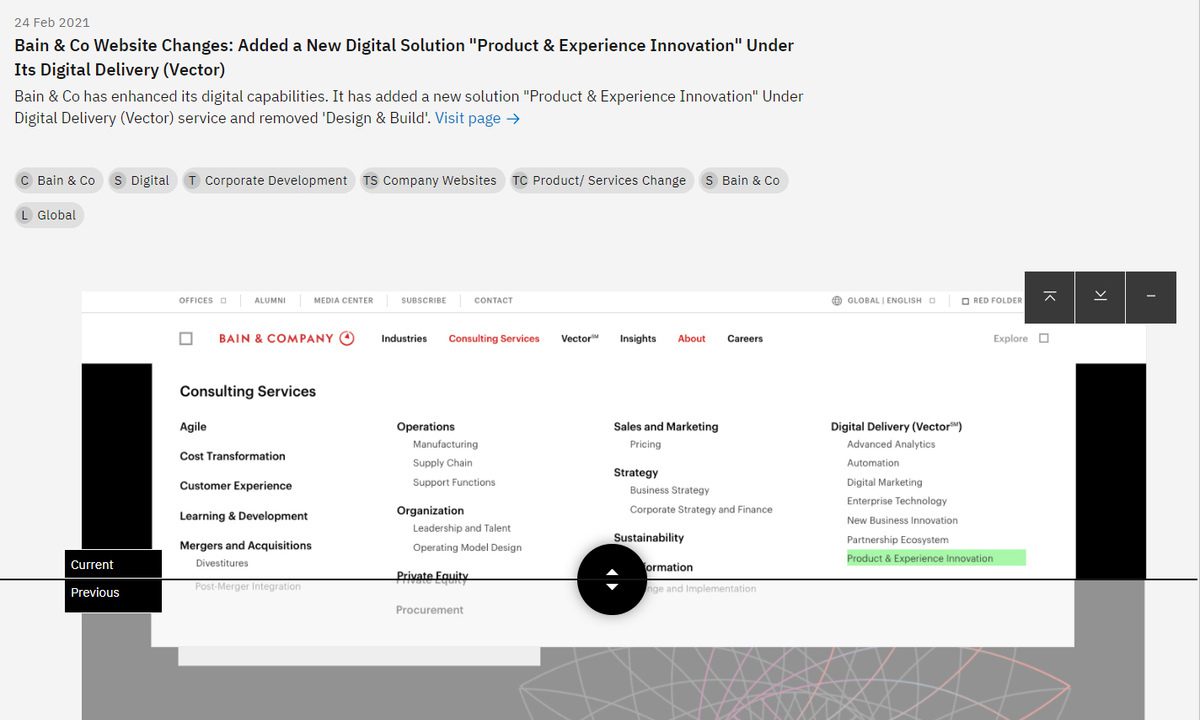
If that’s the case, now is the perfect opportunity for you to push that particular service or feature in the market to capture these customers.
4. Stay Competitive
Staying competitive is perhaps the most important success factor in business. It is easier said than done though. A great way to stay competitive is by spotting potential market gaps. Tracking your competitors’ pricing, product, or feature changes/upgrades may help you do that. In addition, staying up to date with your competitors’ new features and uncovering all their customers’ advantages and benefits helps you plan how to further develop your service/product. Staying updated on the competitive market means staying relevant. In particular, the following things should be kept in mind:
- Changes in the product name(s)
- Supporting image/screenshot/video/demo updates
- New features or benefits
- Pricing changes or the addition of a pricing page/section
- Free trial or freemium offering (SaaS)
Adjusting your pricing and product features by acting on such intelligence is a smart way to increase your chances of being the preferred seller or supplier. It also allows you to offer competitive rates and – once again – stay relevant to the market by providing features and services that your target audience actually wants. You could even highlight the things you provide that your competitors don’t, which could be a deciding factor in customers choosing you over them. Have a look at the example below.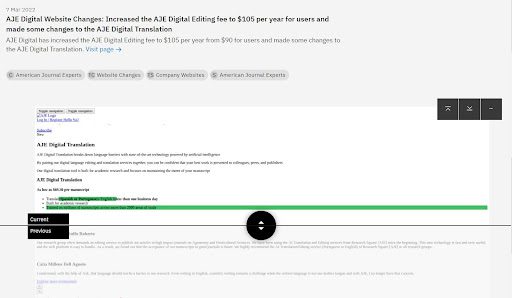
5. Keep Up On Market Trends
Social media has changed the way we do business. In this age of society, new trends pop up all the time. Your competitors may be catching on to things before you. Thus, tracking the website changes of multiple competitors can be a precious source of market intelligence as well as information on market trends. For example, a recent article on LinkedIn, titled “Please Remove ‘Diversity, Equity and Inclusion (DE&I)’ From Your Website,” sparked a trend that led to several companies removing the DE&I section from their websites. (See image below)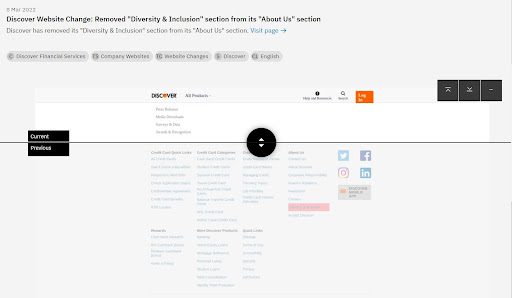
Why A Competitive Intelligence Tool is the Best Way to Track Competitors’ Website Changes?
While competitor website tracking is an excellent method to gather competitive intelligence, it comes with its own set of challenges. It’s an effort-intensive exercise when done manually. Website changes are usually very minuscule compared to parts that have not changed. Also, unlike news and press releases, there are no active alerts and triggers for changes on the competitor’s website.
Most organizations would agree that manually tracking the website changes of each of their competitors is impractical and unfeasible. Why? Because: One, these are not publicly available like news, press releases, blogs, etc., and two, tracking these updates manually (and delivering tangible value) is an impossible task for any CI analyst, as nobody knows when these changes are made.
Thus, a tech-led approach to website change tracking is required because
– A manual approach will fail/frustrate/cost-more-than-benefit – Tech helps track more pages and more competitors with lesser efforts – Tech helps track competitor sites daily rather than weekly/monthly
In addition, a tech-led approach will deliver more profound and timely/early insights, i.e., more competitors + a broader range of changes + reduced lag between actual change and your counteraction on that change.
A tech-led approach involves utilizing a competitive intelligence tool such as Contify. Contify’s website change tracker feature enables users to track and capture any changes that competitors might make to their websites, including messaging changes, pricing changes, feature upgrades, new pages, etc. You can know more about Contify’s website change tracker here.
Different competitive information is available on the web in different layers, for example:
- News: Very significant events
- Press Announcements: Great for getting information on stuff such as leadership hiring, new offerings, awards, etc.
- Social Media Posts: Things such as events, new office pictures, HR initiatives, etc.
- Job Postings: Skills, focus, etc.
- Reviews: SWOT Analysis
- Website changes: Messaging/ Positioning changes, terms & Conditions (new cookie policy), pricing and packing changes, help support documents (insights about UI, changes in features, new integrations, etc.)
There is only one market and competitive intelligence solution in the market that offer such deep website tracking capabilities together with standard market and competitor intelligence tools and features as a unified and integrated platform solution. There is value in using a purpose-built technology solution that radically transforms the approach to not just competitor website tracking, but the market and competitive intelligence program. If you see that value, check out Contify.
Hopefully, this article provided you with helpful information on competitor website change tracking that you can use to your advantage. Cheers!

